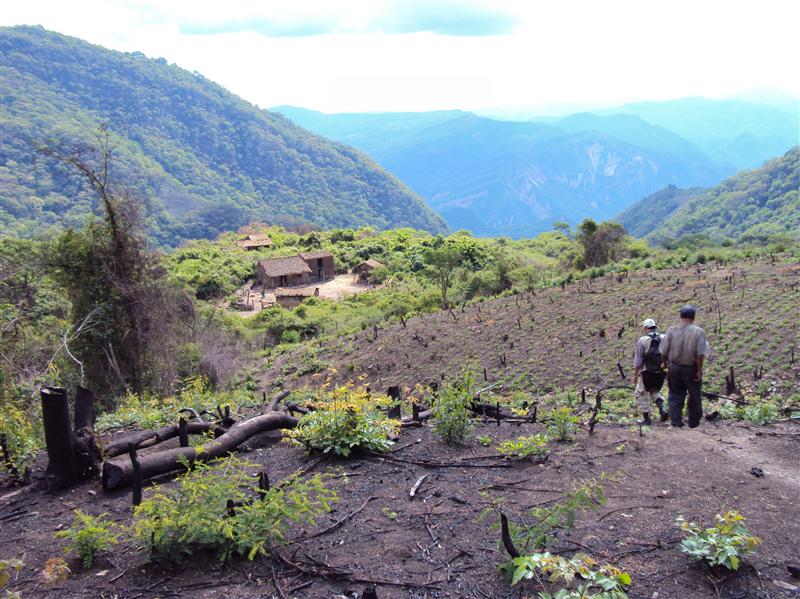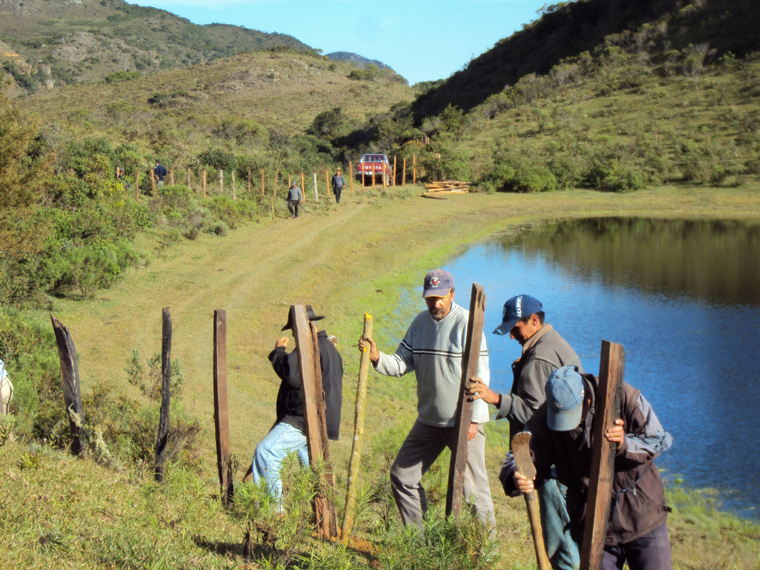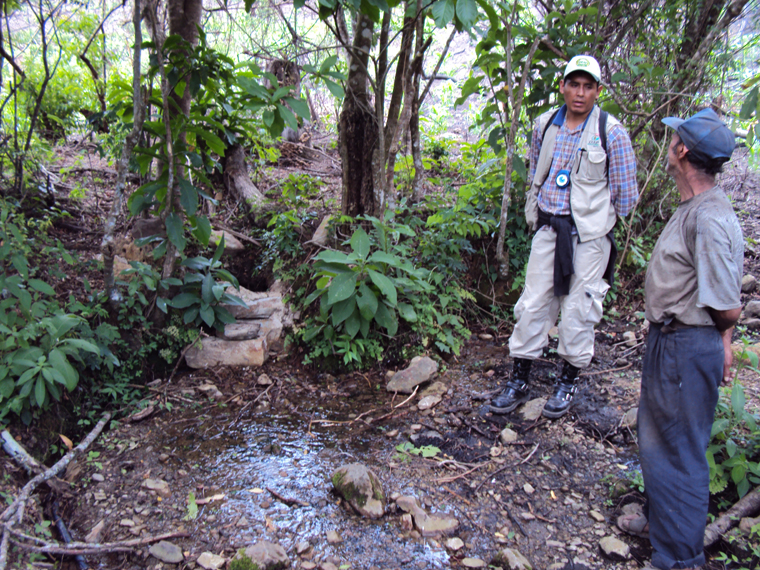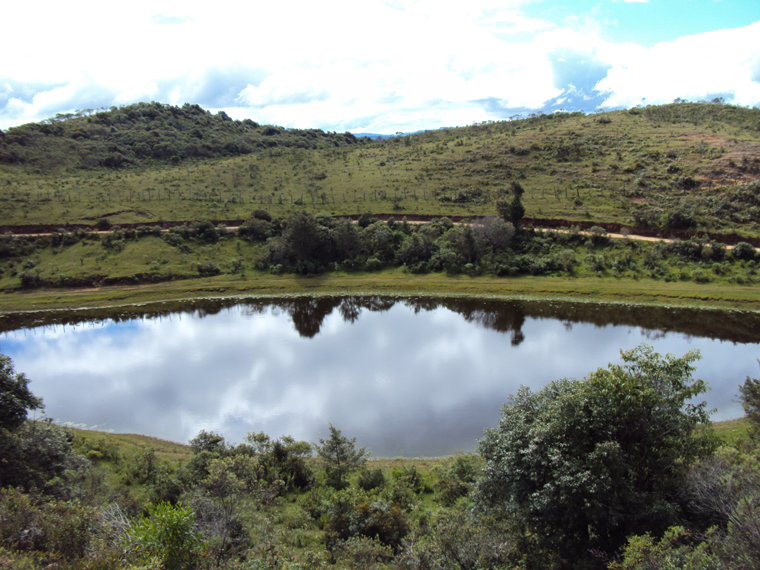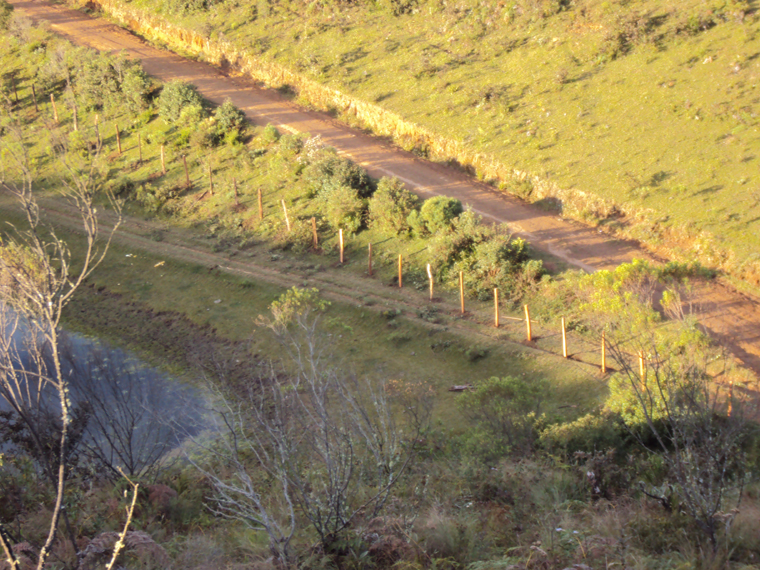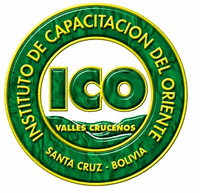CBA Bolivia: Rural Water and Climate Risk Management in the Alto Seco Area (ICO)
Project Overview
Vallegrande, located in the "warm valleys" of Bolivia, contains both moist and dry forests and experiences distinct rainy and dry seasons. This project targets five primarily agricultural communities that produce corn, wheat, potatoes, and vegetables. Residents’ livelihoods are at risk due to increased climate variability, especially changing precipitation patterns. Deforestation and soil degradation already threaten the region's steeply sloped farmlands and pastures. Additionally, because the region receives 80% of its rain between November and March, water availability is often a problem during the dry season.
This Community-Based Adaptation project will protect key hydrological catchment areas and introduce climate-resilient irrigation systems. Its goal is to enable more intensive agriculture, thereby reducing land degradation. The project will allow local communities to utilize available water more effectively as precipitation declines and becomes more erratic.
* This project is part of Bolivia's Community-Based Adaptation portfolio. *
Project Details
This project focuses on the community of Alto Seco in the municipality of Vallegrande in Santa Cruz Department, Bolivia. Vallegrande is located in Bolivia’s “warm valleys” – an area of transition between the western high plains and the eastern lowlands. The Alto Seco area is somewhat dry, and experiences a distinct rainy and dry season. The target community is primarily agricultural, cultivating corn, wheat, potato and vegetables for the nearby market in Vallegrande city. Ecosystems are comprised of low bushy trees, and the altitude of the project area varies between 1800 and 2000 meters above sea level. Baseline environmental challenges include serious deforestation and soil degradation on the steeply sloped pastures and farmlands, driven by the continuing advance of the agricultural frontier.
Changes in climate are already becoming apparent in this part of Bolivia. Climate change projections for Bolivia include increasing temperatures, increasingly intense yet erratic rainfall, and more marked seasonality – in turn increasing risks of impacts including floods and droughts. Community members in Alto Seco are already reporting unfavorable new patterns in precipitation – including less predictable dates for the start of the rainy season, and more droughts. Communities report that when rainfall does come, it increasingly arrives in destructive torrents – increasing erosion pressures and leading to flooding. These pressures have the potential to seriously worsen baseline land degradation pressures through increased risks of erosion on increasingly vulnerable farms. And as climate change drives pressures that can increase land degradation, the need for farmers to abandon degraded lands in favor of new ones could increase – creating a climate-driven cycle of degradation leading to deforestation and further degradation.
This Community-Based Adaptation project will protect key hydrological catchment areas and introduce climate-resilient irrigation systems within participating communities. These measures will be designed to allow for more intensive agriculture, reduce land degradation, and help to even-out annual patterns of water availability as rainfall declines and becomes more erratic.
Key Results and Outputs
Outcome 1 (co-financing): Local water catchments protected
Designate areas around local water as ‘National Heritage Reserve’ (REPANA) (Output 1.1) after designing an agreed-upon mechanism for local property holders to cede portions of their land for micro-watershed protection (Output 1.2).
Outcome 2 (co-financing): Vulnerability of local agriculture to current climate variability reduced
Establish multi-family irrigation systems (Output 2.1).
Outcome 3 (CBA): Adaptive capacity of community and local government improved
Train community to incorporate climate risk management within micro-irrigation systems through participatory process (Output 3.1). Train community to manage the ‘National Heritage Reserve’ areas as part of continued efforts to address climate change risks (Output 3.2).
Reports and Publications
PIFs
Assessments and Background Documents
Bolivia Second National Communication, 2009 (English)
Bolivia Second National Communication, 2009 (Spanish)
Monitoring and Evaluation
Monitoring and evaluation for community-based adaptation is a new field, and the CBA project is piloting innovative approaches to evaluating the success of locally-driven adaptation projects, and generating lessons to inform ongoing practice.
Key considerations in M&E for CBA include:
- Grounding M&E in the local context: M&E for CBA should avoid overly rigid frameworks, recognizing community heterogeneity and maintaining local relevance
- Capturing global lessons from local projects: CBA projects are highly contextualized, but lessons generated should be relevant to stakeholders globally
- Incorporation of both quantitative and qualitative indicators: to ground projects in tangible changes that can be objectively evaluated, and to capture lessons and case studies for global dissemination
To these ends, the CBA project uses three indicator systems: the Vulnerability Reduction Assessment, the Small Grants Programme Impact Assessment System, and the UNDP Climate Change Adaptation Indicator Framework.
The Vulnerability Reduction Assessment (VRA)
The VRA is a question-based approach with the following aims:
- To make M&E responsive to community priorities
- To use M&E to make projects more accountable to local priorities
- To make M&E capture community ideas and local knowledge
- To gather community-level feedback to guide ongoing project management
- To generate qualitative information
- To capture lessons on specific issues within community-based adaptation
- To generate case studies highlighting adaptation projects
The VRA follows UNDP's Adaptation Policy Framework, and is measured in a series of meetings with local community stakeholders. In these meetings, locally-tailored questions based on standard VRA questions/indicators are posed, and the community assigns a numerical score on a 1-10 scale for each question. Progress is evaluated through changes in scores over the course of implementation, as well as through qualitative data collected in community discussions surrounding the exercise.
UNDP has developed a Users Guide to the VRA (Espanol) (Francais) as a tool to assist practitioners to conceptualize and execute VRA measurements in the context of CBA projects.
The SGP Impact Assessment System (IAS)
The CBA, being a project of the GEF Strategic Priority on Adaptation, aims to increase the resilience of ecosystems and communities to the impacts of climate change, generating global environmental benefits, and increasing their resilience in the face of climate change impacts. To this end, the CBA projects use the SGP's impact assessment system for monitoring achievements in GEF focal areas (focusing primarily on biodiversity and sustainable land management).
The IAS is composed of a number of quantitative indicators which track biophysical ecosystem indicators, as well as policy impact, capacity development and awareness-building.
UNDP Climate Change Adaptation Indicator Framework
CBA projects also track quantitative indicators from UNDP's adaptation indicator framework, corresponding to the thematic area on natural resources management. More information on UNDP's indicator framework can be found on the UNDP climate change adaptation monitoring and evaluation website.
* This description applies to all projects implemented through UNDP's Community-Based Adaptation programme. Specific details on this project's M&E will be included here as they become available. *
